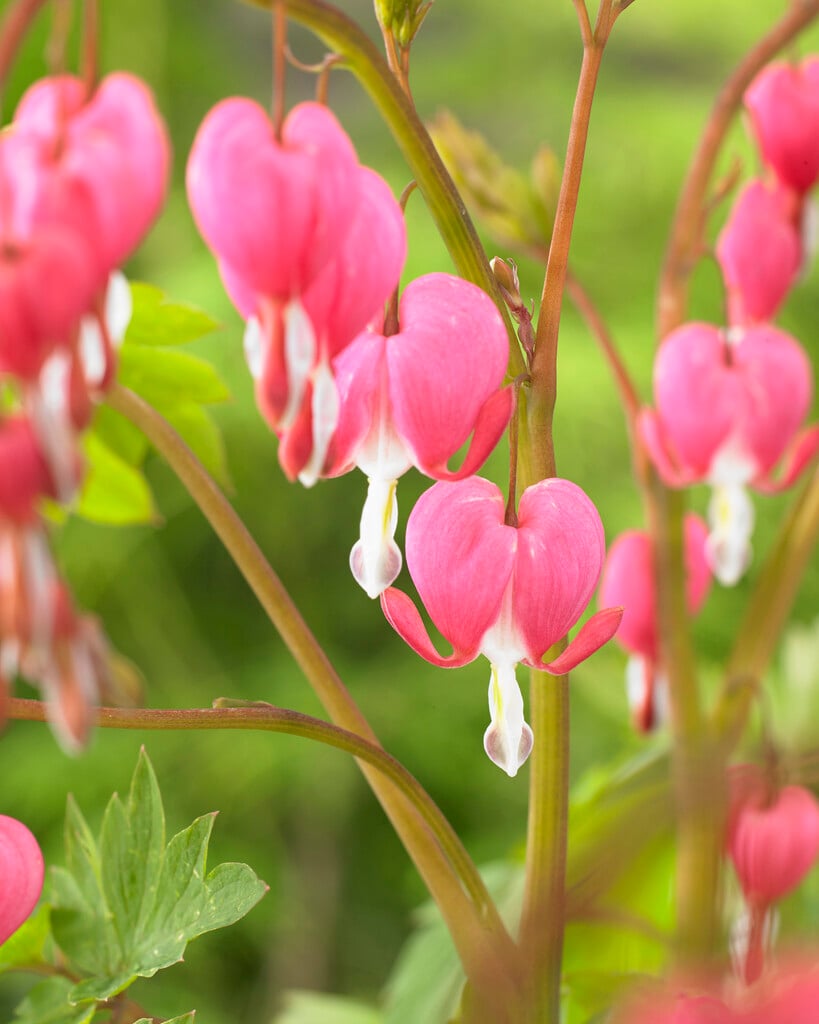Lamprocapnos spectabilis
bleeding heart
A clump-forming perennial to about 1m tall, producing a mound of fleshy divided, mid-green leaves to 40cm long, with cut or lobed leaflets. Heart-shaped, rose-red, purple-pink or white flowers hang from arching succulent stems in late spring or early summer
Other common names
bleeding heartsDutchman's breeches
see morelady in the bath
locks and keys
lyre flower
seal flower
showy bleeding heart
Synonyms
Dicentra spectabilisSize
Ultimate height
0.5–1 metresTime to ultimate height
2–5 yearsUltimate spread
0.5–1 metresGrowing conditions
Moisture
Moist but well–drained, Poorly–drainedpH
Alkaline, NeutralColour & scent
| Stem | Flower | Foliage | Fruit | |
| Spring | Pink White Red | Green | ||
|---|---|---|---|---|
| Summer | Pink White Red | Green | ||
| Autumn | ||||
| Winter |
Position
- Partial shade
Aspect
North–facing or East–facing or West–facing
Exposure
Sheltered Hardiness
H6Botanical details
- Family
- Papaveraceae
- Native to GB / Ireland
- No
- Foliage
- Deciduous
- Habit
- Clump forming
- Potentially harmful
- All parts cause stomach ache if ingested, the foliage may aggravate skin allergies. Wear gloves and other protective equipment when handling
- Genus
Lamprocapnos are rhizomatous perennials with attractively divided leaves and pendent, heart-shaped flowers
- Name status
Correct
- Plant range
- Siberia, China, Korea
How to grow
Cultivation
Grow in moist, fertile, humus-rich soil, preferably neutral or slightly alkaline; site in partial shade although will tolerate sun if the soil is reliably moist
Propagation
Propagate by division in early spring or after the leaves have died down or propagate by root cuttings in winter
Suggested planting locations and garden types
- City and courtyard gardens
- Cottage and informal garden
- Flower borders and beds
Pruning
No pruning required
Pests
May be susceptible to slug damage
Diseases
Generally disease-free
Get involved
The Royal Horticultural Society is the UK’s leading gardening charity. We aim to enrich everyone’s life through plants, and make the UK a greener and more beautiful place.
